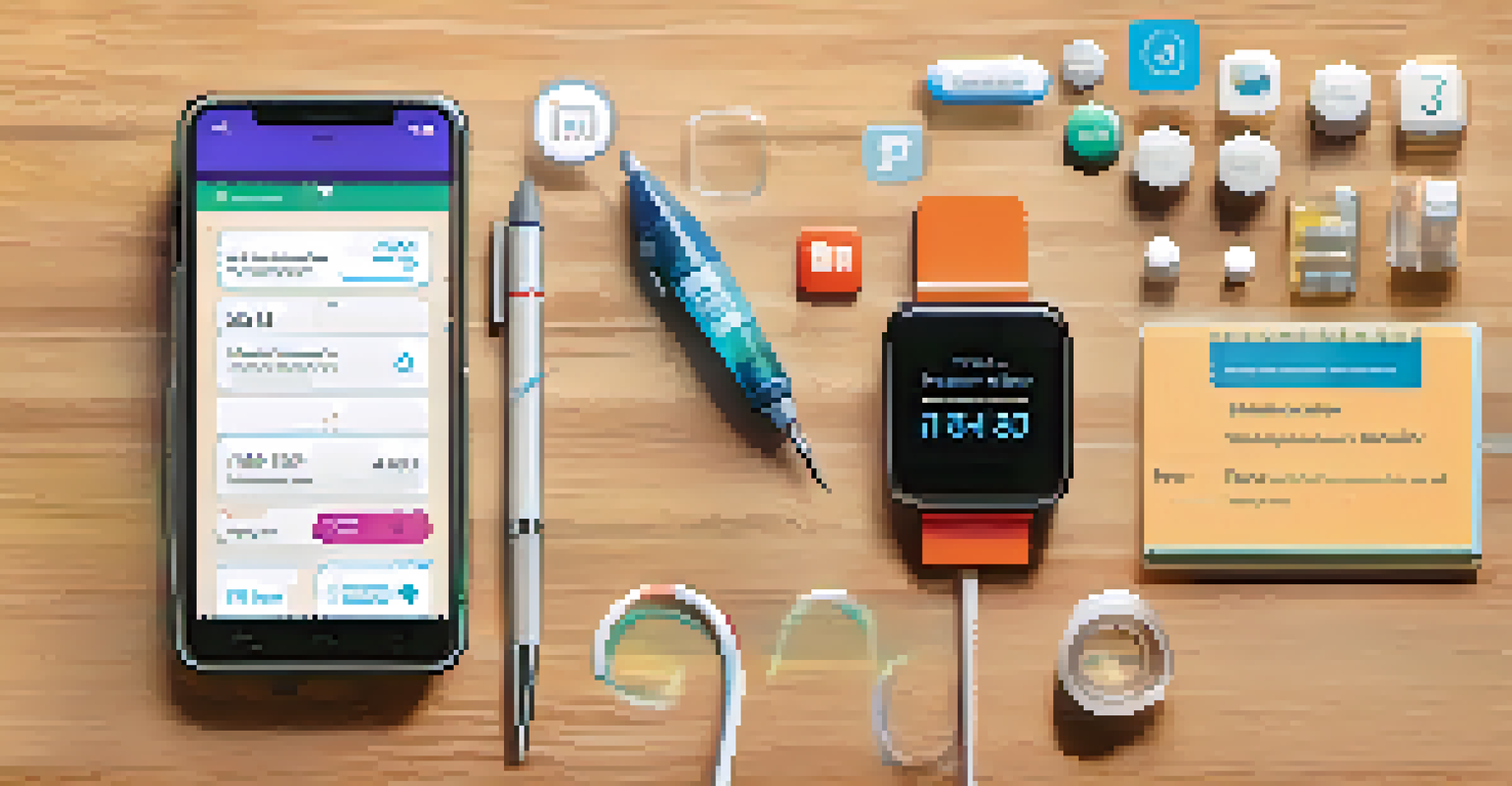The Impact of Technology on Healthcare Quality Improvement

Understanding Healthcare Quality Improvement
Healthcare quality improvement (QI) focuses on enhancing patient care and outcomes. It involves systematic efforts to improve various aspects of healthcare delivery, from patient safety to operational efficiency. The goal is to provide better care while reducing costs and ensuring patient satisfaction.
Quality is never an accident. It is always the result of intelligent effort.
In today's fast-paced healthcare environment, QI is more important than ever. With rising patient expectations and stringent regulatory standards, healthcare organizations must adopt innovative solutions. This is where technology plays a crucial role, providing tools and data that support continuous improvement.
By leveraging technology, healthcare providers can identify areas needing improvement, implement changes, and measure outcomes effectively. The integration of technology into QI processes not only streamlines operations but also fosters a culture of accountability and excellence in care delivery.
The Role of Data Analytics in Quality Improvement
Data analytics has revolutionized the way healthcare organizations approach quality improvement. By analyzing large sets of patient data, providers can identify trends, assess performance, and pinpoint areas for enhancement. This data-driven approach allows for more informed decision-making and targeted interventions.

For example, hospitals can use analytics to track infection rates, readmission rates, and patient satisfaction scores. By understanding these metrics, they can implement specific strategies to address issues and improve overall care quality. This not only benefits patients but also helps in maintaining compliance with regulatory standards.
Data Analytics Transforms Care Quality
By leveraging data analytics, healthcare organizations can identify trends and enhance patient care through informed decision-making.
Moreover, real-time data analytics enables healthcare professionals to respond swiftly to emerging trends. This agility is crucial in a field where timely interventions can significantly impact patient outcomes, ultimately leading to a more effective healthcare system.
Telemedicine and Its Influence on Patient Care
Telemedicine has emerged as a game-changer in healthcare delivery, especially during the COVID-19 pandemic. By allowing patients to consult with healthcare providers remotely, telemedicine has improved access to care while maintaining quality. This is particularly beneficial for individuals in rural or underserved areas.
The greatest danger in times of turbulence is not the turbulence; it is to act with yesterday's logic.
With telemedicine, patients can receive timely consultations without the need for travel, which can often be a barrier to care. This convenience not only enhances patient satisfaction but also encourages individuals to seek medical advice sooner, potentially leading to better health outcomes.
Furthermore, telemedicine platforms often incorporate advanced technologies, such as AI-driven symptom checkers and remote monitoring devices. These tools not only enhance the patient experience but also provide healthcare providers with valuable data to inform treatment decisions and improve quality of care.
Electronic Health Records (EHR) and Improved Communication
Electronic Health Records (EHR) have transformed how healthcare providers manage patient information. EHR systems facilitate the seamless sharing of patient data among different departments and specialists, improving collaboration and communication. This integration is essential for delivering coordinated care and ensuring patient safety.
For instance, when a patient visits multiple specialists, EHRs enable all providers to access the same up-to-date information. This avoids duplication of tests and procedures, reducing unnecessary costs and enhancing the overall patient experience. It also minimizes the risk of medical errors caused by miscommunication or incomplete information.
Telemedicine Improves Access to Care
Telemedicine enhances patient access to healthcare services, especially for those in rural areas, while maintaining quality and satisfaction.
Moreover, EHRs support quality improvement initiatives by providing analytics capabilities. Healthcare organizations can track performance metrics, identify gaps in care, and implement strategies for improvement, ultimately driving better patient outcomes.
Artificial Intelligence in Enhancing Diagnostics
Artificial Intelligence (AI) is making significant strides in healthcare, particularly in diagnostics. AI algorithms can analyze medical images, lab results, and patient data with remarkable speed and accuracy. This technology helps healthcare providers make more informed decisions and improve diagnostic accuracy.
For example, AI can assist radiologists in identifying abnormalities in X-rays or MRIs that might be missed by the human eye. This capability not only enhances the quality of care but also accelerates the diagnostic process, allowing for timely treatment interventions.
Additionally, AI-driven predictive analytics can help identify patients at risk for certain conditions, enabling proactive management. By integrating AI into the diagnostic process, healthcare organizations can significantly improve their ability to deliver high-quality care while reducing the burden on medical professionals.
Mobile Health Apps and Patient Engagement
Mobile health apps are empowering patients to take an active role in their healthcare. These apps provide users with access to their medical records, appointment scheduling, medication reminders, and health tracking features. This increased engagement can lead to improved health outcomes and higher patient satisfaction.
For instance, a patient managing a chronic condition can use an app to monitor their symptoms and medications. This real-time tracking not only helps them stay informed but also enables healthcare providers to receive timely updates, facilitating better care coordination.
AI Enhances Diagnostic Accuracy
Artificial Intelligence significantly improves diagnostic processes, allowing for faster and more accurate patient evaluations and treatment.
Moreover, mobile health apps often include educational resources that encourage patients to adopt healthier lifestyles. By fostering a sense of ownership over their health, these tools contribute to a culture of proactive healthcare, where patients are more likely to follow through with treatment plans and preventive measures.
Challenges in Implementing Technology in Healthcare
While technology offers numerous benefits for healthcare quality improvement, it also presents challenges. One significant hurdle is the integration of new systems with existing workflows. Healthcare organizations must invest time and resources to ensure that technology enhances rather than disrupts patient care processes.
Additionally, concerns around data security and patient privacy are paramount in the digital age. Healthcare organizations must prioritize robust cybersecurity measures to protect sensitive patient information from breaches or unauthorized access. Balancing innovation with security is crucial to maintaining patient trust.

Finally, there is the issue of training and support for healthcare professionals. Implementing new technologies requires staff to adapt to different systems and tools. Providing adequate training and ongoing support is essential for ensuring that technology is used effectively to improve quality and patient care.